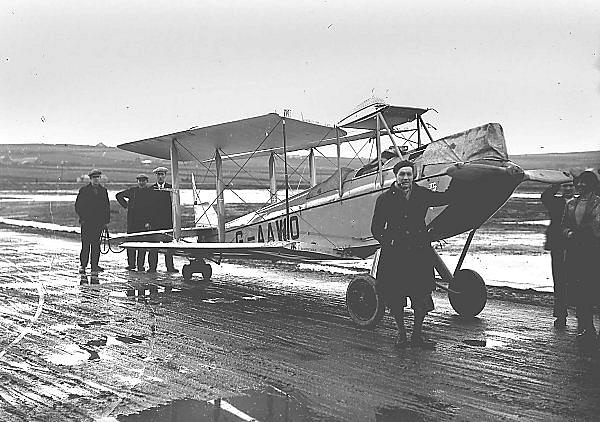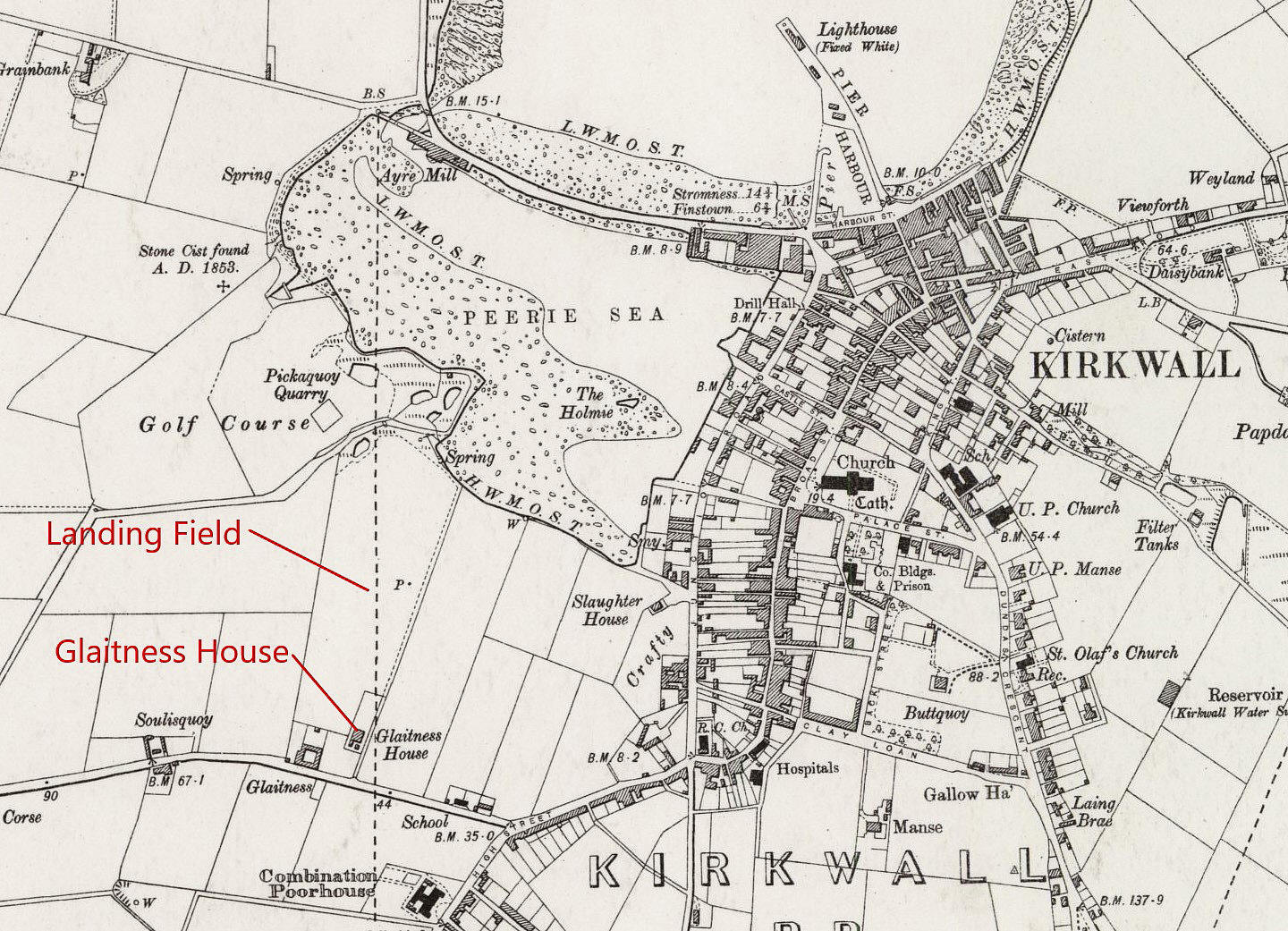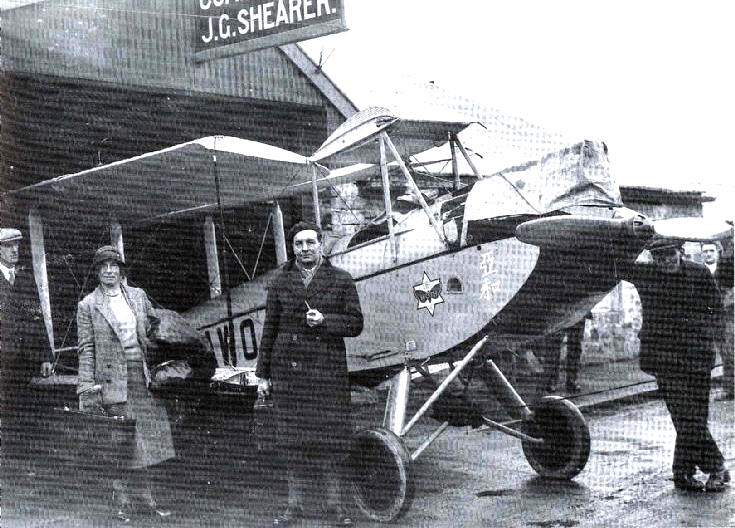Peerie Sea Kirkwall
PEERIE SEA: Temporary landing site
Note: These pictures and the maps were kindly provided by Mr Michael T Holder
Location: On a field afjacent to Glaitness House, just SW and W of Kirkwall town centre
Period of operation: February 1932
NOTES: I have to thank Mike Holder, a great friend of this 'Guide', for doing all the work on this, and he wishes to express his thanks for the help provided by the 'Orkney Library'.
To quote Mike: "In February 1932 Fresson flew to Kirkwall in a DH60G Gipsy Moth - G-AAWO - he was accompanied by a Miss Helen Pauer. He landed in a field next to Glaitness House."
It would appear likely that G-AAWO was still owned by Miss Helen Pauer at that time, (based at HOOTON PARK).
Fresson had been conducting 'joy-rides' in the summer of 1931, to northern Scotland and the Orkney Islands. Being a director of North British Aviation based at HOOTON PARK aerodrome in CHESHIRE, and would have been flying one of their four Avro 504Ks. (G-EBGZ, G-EBIS, G-EBSJ and G-EBXA). Fresson obviously held G-AAWO in high regard as it was his first aircraft when he established Highland Airways at SEAFIELD, Inverness, offering at first what we would describe as an air taxi service.
The photographs were taken in February 1932, when accompanied by Miss Pauer. Was something of a romantic nature going on?
The reason this picture was taken where it was, appears to have been that a storm was expected, and the wings were folded so that the Moth could be transported for safe keeping in a coal depot in Kirkwall owned by J G Shearer in West Castle Street. As Mike Holder points out, the first picture appears to be on the Great Western Road, about 200 yards south of the Ayre Road just to the west of Kirkwall.
Without too much doubt, Fresson made a precautionary landing here as the flying conditions worsened. He may well have been heading for HATSTON at the time? As a general rule, in this 'Guide' forced and precautionary landing sites are not included - there are just too many of them over the last century or so. However, what a treat to have two pictures to illustrate this event - it could not be ignored.
Even today pilots flying light aircraft especially still need to make precautionary landings - for a variety of reasons, mainly weather related. Indeed, I have made a few myself, but with modern GA aircraft a suitable airfield, (possibly an airstrip), is always preferred. In the early days especially, aircraft (and this includes most airliners) were all tail-wheel types and designed with undercarriages suitable for landing in unprepared fields and meadows. Indeed, many early aerodromes had pretty rough grass areas to use. Some still do!
The main problem with modern aircraft equipped with tricycle undercarriages, is that nose-wheels tend to be both weak and inclined to dig in on rough surfaces, very often resulting in the aircraft turning over onto its back - with resulting serious damage and injuries to those on board. In the latter case, not least when trying to get out.
Incidentally, on modern maps, is now called the Peedie Sea.
We'd love to hear from you, so please scroll down to leave a comment!
Leave a comment ...
Copyright (c) UK Airfield Guide



















